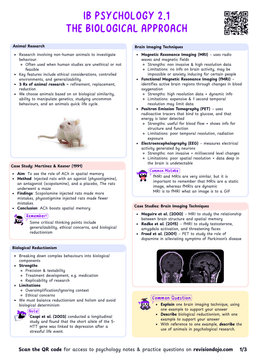Operant Conditioning Shapes Behaviour Through Consequences
Operant Conditioning
Operant conditioning is a type of learning where behaviour is shaped by its consequences.
- Unlike classical conditioning , which involves associating two stimuli, operant conditioning focuses on the relationship between a behaviour and its outcome.
- Behaviours followed by reinforcement (pleasant consequences) are more likely to be repeated
- Those followed by punishment (unpleasant consequences) are less likely to occur again.
Key Components of Operant Conditioning
- Reinforcement: Increases the likelihood of a behaviour.
- Positive Reinforcement: Adding something pleasant to encourage repetition of a behaviour.
- Negative Reinforcement: Removing something unpleasant to encourage repetition of a behaviour.
- Punishment: Decreases the likelihood of a behaviour.
- Positive Punishment: Adding something unpleasant to discourage a behaviour.
- Negative Punishment: Removing something pleasant to discourage a behaviour.
- Positive does not inherently mean good, and negative does not inherently mean bad.
- Rather, positive means something is added, whereas negative means something is removed.
- Positive Reinforcement: Giving a student a good grade when they do well on an exam.
- Negative Reinforcement: Pain relief after taking a painkiller.
- Positive Punishment: Yellow cards in football when a player commits a foul.
- Negative Punishment: Confiscating a teenager's phone when they misbehave.
Skinner's Experiments with Rats and Pigeons
Case studySkinner's Experiments with Rats and Pigeons
Aim: To investigate how consequences shape behaviour.
Method:
- Skinner placed rats and pigeons in a controlled environment known as a Skinner Box.
- The box contained a lever (for rats) or a disc (for pigeons) that, when pressed or pecked, would deliver a food pellet (positive reinforcement).
- In some variations, pressing the lever would stop an electric shock (negative reinforcement).
- Skinner also introduced punishment by delivering a mild shock when the animal performed an undesired behaviour.
Results:
- Animals quickly learned to repeat behaviours that resulted in positive reinforcement (e.g., pressing the lever for food).
- Behaviours that removed unpleasant stimuli (e.g., stopping a shock) were also repeated.
- Behaviours followed by punishment were less likely to be repeated.
Conclusion: Behaviour is shaped by its consequences, with reinforcement increasing and punishment decreasing the likelihood of a behaviour.


